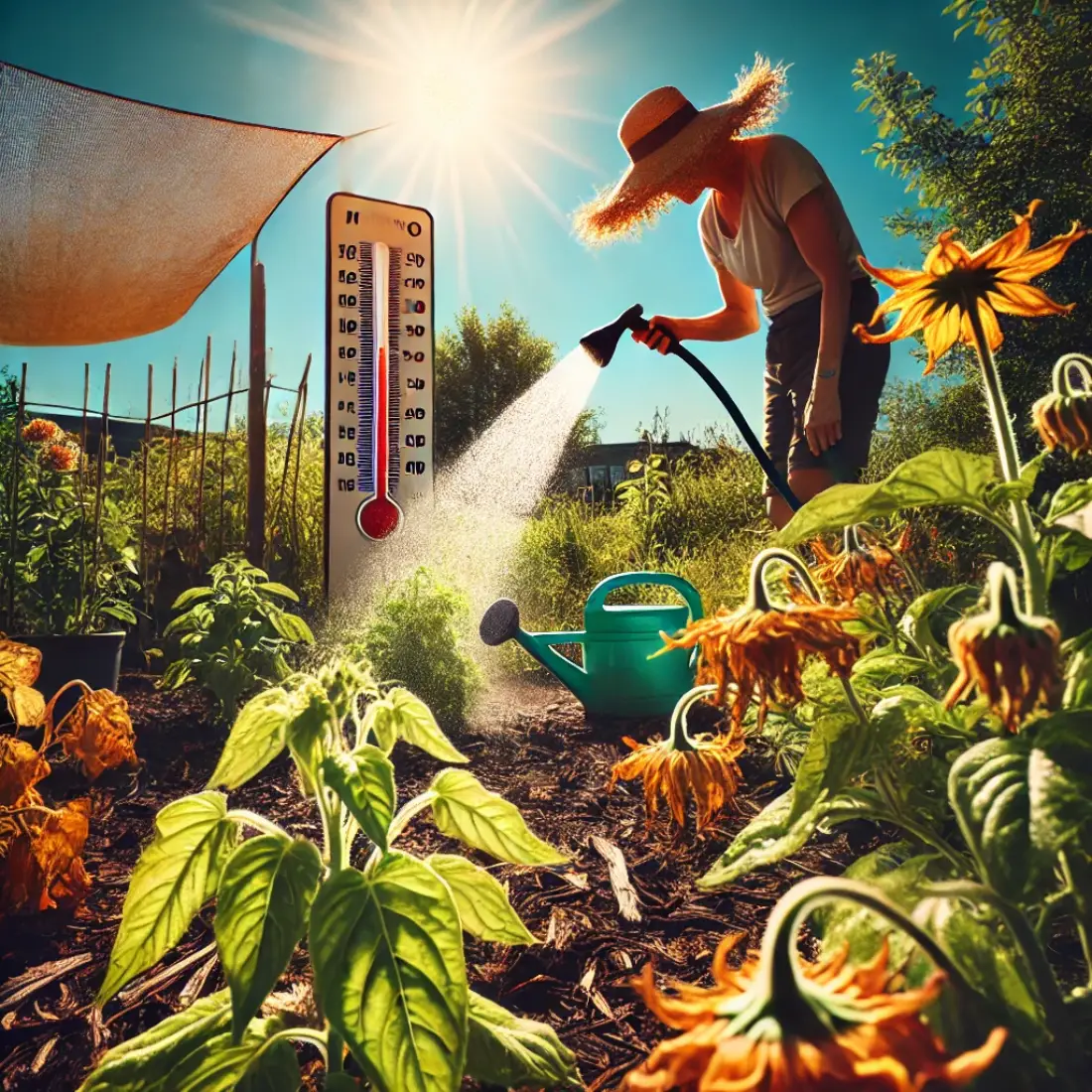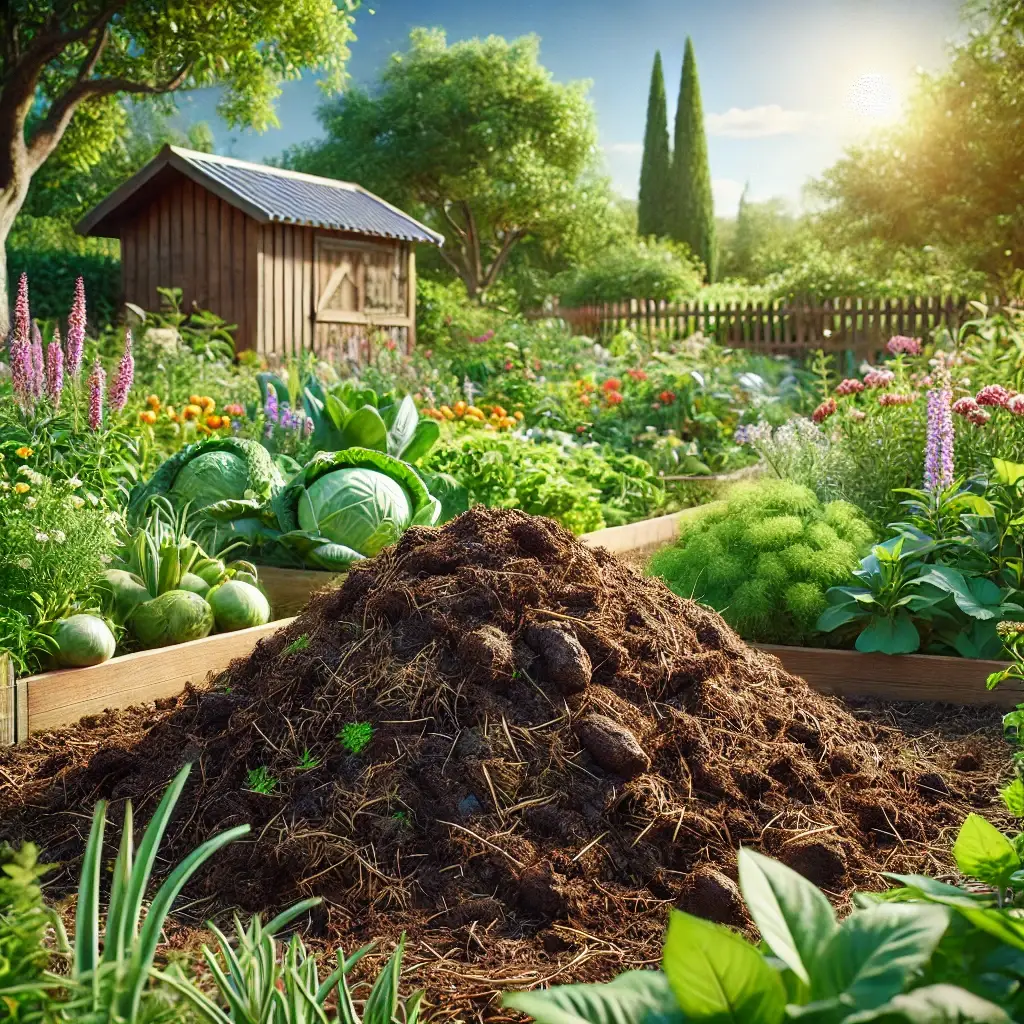Heat stress is a common challenge for gardeners, particularly during the sweltering summer months. When temperatures soar, plants can struggle to maintain their health, leading to wilted leaves, stunted growth, and even death. Heat-stressed plants suffer from dehydration, nutrient deficiencies, and cellular damage, making it crucial to employ effective prevention strategies.
Fortunately, there are numerous organic methods available to safeguard your plants against heat stress. These methods not only protect your plants but also promote a healthier, more sustainable garden environment.
Effects of Heat Stress on Plant Health
The impact of heat stress extends beyond immediate visible damage. High temperatures can:
- Disrupt photosynthesis: Excessive heat can impair the plant’s ability to convert sunlight into energy.
- Reduce nutrient uptake: Heat-stressed roots struggle to absorb essential nutrients from the soil.
- Alter metabolic processes: Enzyme activity can be hindered, affecting the plant’s overall metabolism.
- Lead to dehydration: Increased evaporation rates cause plants to lose water faster than they can absorb it.
Organic Methods to Prevent Heat Stress
Choosing Heat-Tolerant Plants
Selecting heat-tolerant plants is a proactive way to combat heat stress. These plants are naturally adapted to withstand higher temperatures and require less maintenance during heatwaves.
Look for species like succulents, cacti, and native plants suited to your local climate. Consider plants with deep root systems, waxy leaves, or smaller leaf surfaces, as these characteristics help them conserve water and endure extreme heat.
Proper Watering Techniques
Watering correctly is crucial for preventing heat stress. During hot periods, water plants deeply but less frequently to encourage deep root growth. Early morning or late evening watering minimizes evaporation and allows roots to absorb moisture effectively.
Implementing drip irrigation systems can provide consistent moisture directly to the root zone, reducing water wastage and maintaining soil hydration.
Mulching for Soil Protection
Mulching is an effective organic method to shield plants from heat stress. A layer of organic mulch, such as straw, wood chips, or compost, helps retain soil moisture, regulate soil temperature, and suppress weed growth.
Apply mulch around the base of your plants, ensuring it is about 2-3 inches thick. This protective layer acts as an insulating blanket, keeping the soil cooler and reducing water evaporation.
Shading and Plant Protection
Providing shade during the hottest part of the day can significantly reduce heat stress. Use shade cloths, garden netting, or even natural shading methods like planting taller crops or companion plants to create a microclimate.
Temporary structures, such as shade tunnels or awning covers, can also protect plants from direct sunlight, helping them stay cool and hydrated.
Soil Health and Organic Amendments
Healthy soil plays a vital role in a plant’s ability to withstand heat stress. Improve soil structure and water retention by incorporating organic amendments like compost, manure, and worm castings.
These materials enhance soil fertility and provide essential nutrients, promoting strong root growth and overall plant health. Regularly adding organic matter to the soil helps maintain its resilience against extreme temperatures.
Organic Foliar Sprays and Solutions
Foliar sprays can provide an immediate boost to plants facing heat stress. Create homemade organic sprays using ingredients like seaweed extract, compost tea, and aloe vera.
These sprays can supply nutrients directly to the leaves, improving their resilience to heat. Apply foliar sprays during the cooler parts of the day to maximize absorption and effectiveness.
Beneficial Plant Companions
Companion planting is a natural way to protect plants from heat stress. Certain plants, when grown together, provide mutual benefits such as shade, wind protection, and improved soil health.
For example, planting basil near tomatoes can offer shade and repel pests. Utilizing companion planting techniques can create a balanced ecosystem in your garden, enhancing plant resilience to heat.
Long-Term Strategies for Heat Stress Management
Creating Microclimates
Creating microclimates in your garden can significantly mitigate the effects of heat stress. Microclimates are small areas with slightly different climatic conditions than the surrounding areas, often achieved by strategic plant placement and landscape features. To create favorable microclimates:
- Use windbreaks: Plant hedges or install fences to reduce wind exposure.
- Incorporate water features: Ponds or fountains can cool the surrounding air.
- Plant densely: Grouping plants closely together can create shaded, cooler areas.
Improving Garden Design and Layout
Thoughtful garden design can play a crucial role in preventing heat stress. When planning your garden:
- Consider orientation: Position heat-sensitive plants where they’ll receive morning sun and afternoon shade.
- Use vertical gardening: Trellises and arbors can provide shade for plants beneath them.
- Implement raised beds: These can improve drainage and keep roots cooler.
Strategically placing shade-providing structures like pergolas can also help manage heat exposure.
Monitoring and Early Detection
Regular monitoring and early detection are key to managing heat stress effectively. Use these strategies to stay ahead:
- Use thermometers and moisture meters: These tools help track soil and air temperatures and moisture levels.
- Inspect plants regularly: Look for early signs of heat stress, such as wilting or leaf discoloration.
- Adjust care routines: Based on monitoring results, adapt watering schedules and shade provisions accordingly.
FAQs about Heat Stress in Plants
What are the early signs of heat stress in plants?
Early signs of heat stress in plants include yellowing or wilting leaves, stunted growth and flower drop, and leaf scorch and sunburn.
Can organic methods completely prevent heat stress?
Organic methods can significantly reduce heat stress, but extreme conditions can still cause stress, so using multiple strategies increases overall resilience.
How often should I water my plants during a heatwave?
During a heatwave, water your plants deeply every few days, watch for signs like wilting or dry soil, and water early in the morning or late in the evening to minimize evaporation.
What types of mulch are best for preventing heat stress?
Straw is excellent for retaining moisture and insulating soil, wood chips are long-lasting and regulate temperature, and compost adds nutrients while protecting the soil.
How can I create shade for my plants naturally?
You can create natural shade for your plants by using companion planting where taller plants shade smaller ones, utilizing shade cloths as temporary and movable solutions, and setting up trellises and arbors to support climbers and offer shade.
Are there specific plants that are more resistant to heat stress?
Plants that are more resistant to heat stress include succulents, which are adapted to hot, arid conditions, native plants that thrive in local climates, and drought-tolerant varieties bred for heat resistance.
How can I improve soil health to help plants resist heat stress?
To improve soil health and help plants resist heat stress, regularly add compost to enrich the soil and improve water retention, incorporate organic amendments to enhance soil structure and fertility, and plant cover crops to improve soil organic matter.
What is the role of foliar sprays in preventing heat stress?
Foliar sprays deliver nutrients directly to the leaves, with homemade solutions like seaweed extract and compost tea being effective, and should be applied during the cooler parts of the day for best absorption.
How does creating microclimates help with heat stress?
Creating microclimates helps with heat stress by providing localized conditions with different temperatures and humidity levels, using windbreaks and water features to cool the surrounding air, and diverse planting to create shaded, cooler areas.
What are the benefits of monitoring plant health regularly?
Regularly monitoring plant health allows for early detection of symptoms, informed care through timely adjustments, and improved outcomes by leading to proactive management.











